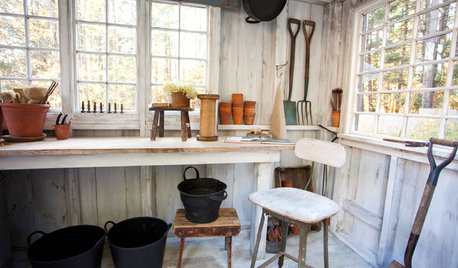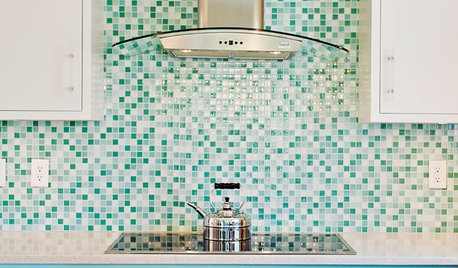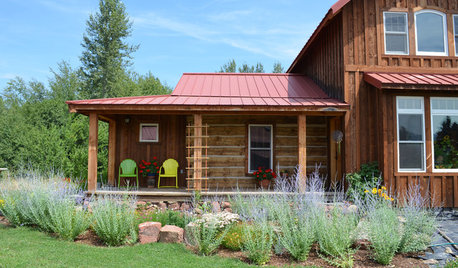I started my first bin a little over a year ago. It was one of the 10 or 15 gallon Rubbermaid totes that so many seem to start out with. I followed the instructions here, wetting the bedding, being careful with meat and dairy, things like that. The bin was put in my laundry room, and all was well for a while.
Then my bin started to stink. I dug into it, and sure enough, it was too wet. I threw in some more paper, and stopped adding as much food at once. The problem didn't really resolve itself, so I drilled a couple of holes in the bottom of the bin, layered a piece of chicken wire across a couple of small pieces of wood, and tilted the bin. This allowed any moisture to drain to the bottom of the bin, and then out the holes.
Moisture is still moisture, though, and the mites showed up. I determined that the problem was that I was still adding damp bedding to the bin. Most seasoned vets will tell you it's not necessary to continue dampening the bedding, as long as you are adding food with a decent moisture content.
I think it would be beneficial for newbies to tell them that they only need to dampen the bedding the first time only. It's rare I hear of someone having a bin that's too dry.
Anyway, all went well until I was ready to harvest the castings. Dumping and sorting sucks. If I had to do this every time, I would give up on worming. Using lights to drive worms down helped a bit, but it was still a rather boring, tedious, back breaking experience.
Enter the flow through design. This was a godsend. I used a 35 gallon trash can with wheels. This proved beneficial once the can started filling up, since I have a small garage. It was easy to move around to spots that weren't being used, depending on the season. I used threaded rods spaced about a half inch apart, placed about 1/2 a foot above the bottom. I cut out a small section underneath to access the vermipost from the bottom. There was a small lip on the bottom left in place in case the leachate got out of control.
I drilled a bunch of small holes in the lid, and then covered them with some screen I had left over. This screen didn't do much, a the holes were too small for normal flies, but too large to stop gnats and the like. I placed newspaper over the bars, and then dumped in the contents of my rubbermaid bin. I threw in some more bedding on the top, and started to fully enjoy the worming experience.
All was well, for a while, until I had a bunch of yard waste. I didn't have a compost bin, yet, so it was almost entirely thrown into the worm bin. I put in some more shredded paper, as well as some food, and created a small compost bin. I noted that it was heating up, moreso than the normal Summer heat would have caused. I took some Gatorade bottles, filled them with water, froze them, and shoved them into the middle of the bin. I did this for a few weeks, and this seemed to resolve the problem. During a few weeks when the weather was really hot, I used the frozen Gatorade bottles, but only placed them the top of the bin. I did not have a massive die off of worms, and life continued on.
The next minor mishap came about as I was collecting coffee grounds from work. I still did not have a compost bin, so the worm bin was getting the majority. I noticed an ammonia smell coming from the bin, so I added a bunch of shredded paper and cardboard. Crises averted, worms kept on pooping.
For a while, I was freezing food, but then gave up as bugs were going to get into it anyway. I now just keep a container in the fridge for scraps. If the worms have eaten recently, I put the scraps in the compost bin. If they haven't, or if the scraps contain meat, I put it in the worm bin. I don't do any preprocessing, and I'm not concerned with what goes into the bin.
I've put pasta, salsa, cheese, bread, vinegar soaked dill from pickles, pizza, old beer and soda, pistachio shells, weeds, toilet paper rolls, whole rotisserie chickens, turkeys after carving, napkins, socks, onions, garlic, just about anything you can imagine. My worms are still doing just fine.
I let this continue for the year. Once Winter rolled around, I wrapped a blanket around the bin, and started feeding more slowly. Our Winter was pretty mild in Colorado this year, only getting just below freezing. There were several nights where we got close to zero, maybe a few below. The worms slowed down, but still processed food and lived. When the weather started getting nicer, I removed the blanket to find that the bottom section had filled up with liquid, up to the top of the aforementioned lip. I just used shredded paper to soak it up, and then tossed it back into the bin.
After about a year of this, the bin was nearing the full level. I started to remove vermipost from the bottom. This worked great the first time, but subsequent times revealed that the vermipost didn't push itself down to the bars under it's own weight. It stayed pretty compacted where I was unable to reach with the garden hand rake I was using. I found an old broom handle that I inserted from the top in a few places, and moved it around a bit to get the vermipost break up and fall down to the bars. This also helps with aeration.
Sorting the vermipost was still a chore. Since I threw everything in there, there was still a lot of stuff that wasn't finished yet. The pistachio shells, roots from various plants, shredded plastic windows from envelopes, the chicken and turkey bones, other various things that will never break down. There were very few worms, and I didn't see any cocoons coming from the bottom.
So, I took the plastic bag that my oranges came in, dumped the vermipost in, and shook it around. Finished vermipost fell through, which I distributed where needed. The stuff left in the bag was then divided into two piles, one that would never break down which went in the trash, and another that would eventually break down which went back into the bin. This greatly shortened my sorting time, which allowed for more time drinking beer.
Overall, the flow through bin is what I would recommend to anyone getting started. It allows for more mistakes to be made, as well as a greater chance of worms surviving. It has enough mass when full to allow for overwintering, while also allowing the worms to find someplace cool during summer. I've had mites and potworms come and go with no ill effects, and it's unlikely to have either too much or too little moisture. There is no tedious dump and sort methods involved, and the worms seem to be quite happy.
It's been a good time, and I have this site to hold completely responsible in getting to where I am.
















wiggleme
anewgarden
Related Professionals
Windham Landscape Architects & Landscape Designers · Wixom Landscape Architects & Landscape Designers · Milford Landscape Contractors · Pelham Landscape Contractors · Dallas Landscape Contractors · Maywood Landscape Contractors · Wareham Landscape Contractors · West Allis Landscape Contractors · Shafter Landscape Contractors · Murraysville General Contractors · Bel Air General Contractors · Erlanger General Contractors · Euclid General Contractors · Las Cruces General Contractors · Van Buren General ContractorsmndtrpOriginal Author
wiggleme
cats39
eric30
Jasdip